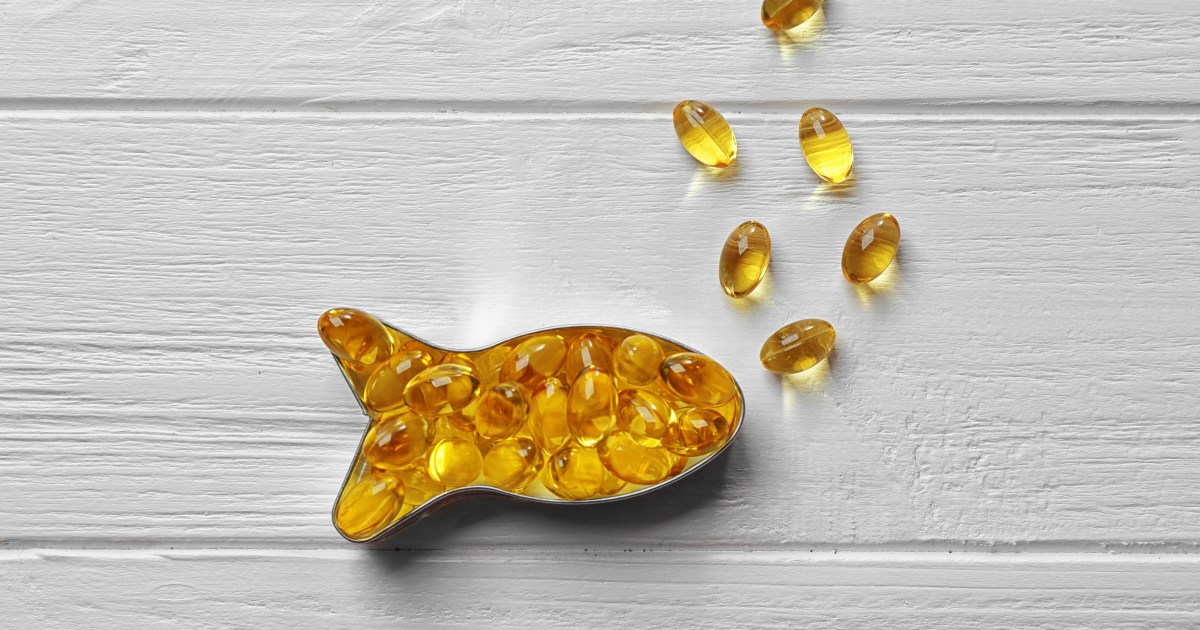A recent study indicates that a type of fat reduces the risk of death from the emerging corona virus disease "Covid-19", so what is it, and where is it found?
The study was conducted by US researchers at Cedars-Sinai Medical Center and published in the journal Prostaglandins, Leukotrienes & Essential Fatty Acids.
The fats that the researchers found to reduce death by Covid-19 are omega-3 fatty acids. They are found in fish oil, salmon, herring, mackerel and sardines, and are also available in the form of nutritional supplements.
We emphasize here that the information that we will present here is for guidance, as fish oil is not a cure for Covid-19 and is not a substitute for disease prevention measures such as social distancing, wearing masks and personal hygiene.
You should also consult your doctor about how to obtain "omega-3", and whether it suits your condition and can help you reduce the risk of complications "Covid-19 ″"?
The researchers measured the index of "omega-3" acids in the blood of 100 patients infected with "Covid-19" virus, and the risk of death was analyzed. %.
The researchers said that the long-chain omega-3 fatty acids, "eicosapentaenoic acid (EPA), and" docosahexaenoic acid "(DHA), have anti-inflammatory properties that may help reduce the rates of disease and death caused by" Covid-19 "infection.
The researchers stated that the severe and deadly disease "Covid-19" is caused, in part, by rapid elevations of inflammatory cytokines such as "TNF-alpha", "Interleukin-1 beta" (IL-1β) and "Interleukin-6" ( IL-6), which leads to cytokine release syndrome or “cytokine storm.” Accordingly, one of the preventive methods of “Covid-19” infection is to reduce the release of cytokines.
In a cytokine storm, a dangerous immune response occurs, as immune cells are overproduced and enter the lungs, leading to a deterioration in the body similar to blood poisoning.
This is accompanied by a decrease in the ability to breathe and pneumonia, which may eventually lead to death.
Cytokine
The long-chain "omega-3" acids found in fish oil have a large number of biological activities, including modulation of directly and indirectly modulating inflammatory responses and modulation and reduction of cytokine release.
The researchers said that there is a need for more studies on the relationship between "omega-3 fatty acids and" Covid-19 ".
According to the Office of Dietary Supplements ODS, DHA and EPA are found in fish, fish oils, and krill oils, but they are originally manufactured by microalgae, not by fish.
When fish consume phytoplankton that consume microalgae, they accumulate "omega-3" in their tissues.
After its ingestion, the dietary fats are dissolved in the intestinal lumen and then absorbed, once they enter the bloodstream, and the lipoprotein particles diffuse inside the body, to deliver the fat to different organs for subsequent oxidation, metabolism, or storage in adipose tissue.
"Omega 3" plays important roles in the body as phospholipid components that form structures of cell membranes, especially in the retina, brain and sperm.
According to the Office of Dietary Supplements, the Adequate Intakes AIs of Omega-3 is sufficient for those over the age of 14 years, males are 1.6 grams, and females 1.1 grams, and for pregnant women it is 1.4 grams per day, and 1.3 grams per day for nursing mothers.
The content of "omega-3" in fish varies widely, as fatty fish in cold water, such as salmon, mackerel, tuna, herring and sardines, contain high amounts of "omega-3", while low-fat fish - such as bass, tilapia and cod - contain a lower proportion. .
The content of "omega-3" in fish also depends on the composition of the food that the fish consume. Farmed fish usually contain higher levels of EPA and DHA compared to wild-caught fish, but this depends on the food they eat.
The following is the content of a group of foods of "omega-3" acids in grams (eicosapentaenoic acid and docosahexaenoic acid).
Salmon, Atlantic, farmed, cooked, 3 ounces (an ounce equals 28 grams):
Docosahexaenoic acid: 1.24
Eicosapentaenoic acid: 0.59
Salmon, Atlantic, Wild, Cooked, 3 ounces:
Docosahexaenoic acid: 1.22
Eicosapentaenoic acid: 0.35
Herring, Atlantic, cooked, 3 ounces
Docosahexaenoic acid: 0.94
Eicosapentaenoic acid: 0.77
Sardines, canned in tomato sauce, drained, 3 oz
Docosahexaenoic acid: 0.74
Eicosapentaenoic acid: 0.45
Mackerel, Atlantic, cooked, 3 ounces
Docosahexaenoic acid: 0.59
Eicosapentaenoic acid: 0.43
Salmon, pink, canned, drained, 3 ounces
Docosahexaenoic acid: 0.63
Eicosapentaenoic acid: 0.28
Trout, rainbow, wild, cooked, 3 ounces
Docosahexaenoic acid: 0.44
Eicosapentaenoic acid: 0.40
Shrimp, cooked, 3 ounces
Docosahexaenoic acid: 0.12
Eicosapentaenoic acid 0.12
Canned light tuna in water, drained, 3 ounces
Docosahexaenoic acid: 0.17
Eicosapentaenoic acid: 0.02

